




Growing up in Puerto Rico, my family didn’t have a computer when I was younger, but I was fascinated by technology and driven by my desire to lead a team. Before I even earned my degree in computer engineering, Lockheed Martin began training me as an intern to develop systems that protect people and networks from cyber invaders. Now I coach teams of the best cybercrime fighters. Visit www.lockheedmartinjobs.com to learn how you can join our team.
 Alex Engineering Manager
Alex Engineering Manager

Amazon Stores is the customer-obsessed team behind Amazon.com. Here, you can do anything and we invite you to come build the future with us. We make Amazon happen, owning the technology, brands, products, and experiences that people recognize as Amazon.com. Not only do we strive to be Earth’s most customer-centric company, but we are also on a mission to be Earth’s best employer by hiring and developing the best.
amazon.jobs

VOLUME 38 | NUMBER 2
News & Events ................... 8


Get the latest news and critical academic dates.
Scholarships .................... 10
Are you looking to make a difference? These scholarships can help you save the world!
Internships ........................12
Need an internship? Learn all about different internship opportunities and who's looking to hire.
Tech Tools ........................ 14
This article explores how AI can play a pivotal role in combating climate change and creating a sustainable future.

Career Outlook ............... 35
Check out new careers and opportunities in the energy sector.
• Industry Overview
• Job Horizons
• Companies to Know
• People to Know
Antonio R. Flores, the president and CEO of the Hispanic Association of Colleges and Universities (HACU), recently attended the Hispanics in Energy –Energy Legislative Summit in Washington, D.C. At the summit, a panel discussed STEM education pathways and increasing Hispanic representation in the technical workforce, particularly in the renewable/clean energy sector.
The Energy Legislative Summit brought together national leaders to address the lack of business, jobs, and corporate participation for Hispanics in America's $3 trillion energy industry.
During the event, HACU was awarded a special recognition award and a $45,000 grant from the Southern Company Gas Foundation. The grant will support its efforts in achieving sustainability goals, such as developing opportunities for renewable gas and low-carbon fuels and pursuing clean technologies and practices.
Moreover, Dominion Energy has partnered with HACU to support seven higher education institutions across Virginia, North Carolina, Connecticut, Utah, and Puerto Rico. The collaboration aims to promote higher education equity through a three-year, $2 million initiative, which includes a Summer Bridge Program for high school students.
The program will introduce students to STEM careers and the energy industry; provide support services like mentoring, tutoring, and career awareness seminars; and give students access to additional resources through HACU membership.
The initiative is modeled on Utah Valley University's Latino Scientists of Tomorrow Summer Bridge Program and aims to improve equity for Hispanic students and increase diversity in STEM careers.
Tyrone D. Taborn Publisher and Chief Content Officer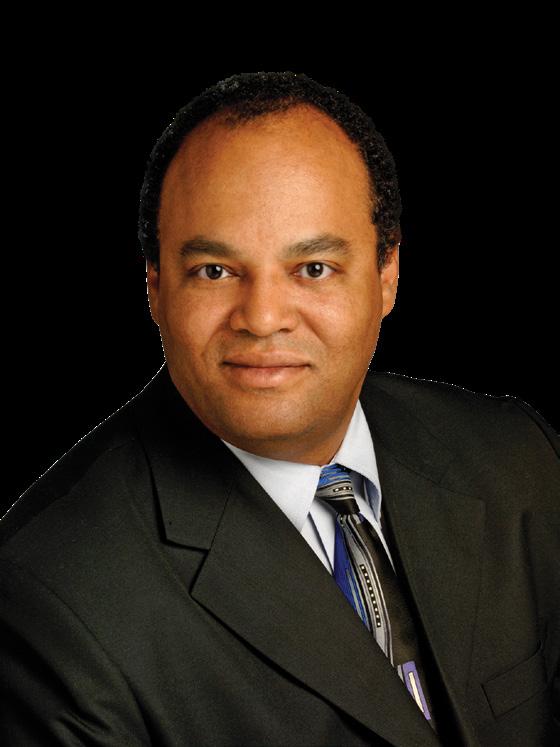
sdvwvefvvwdvdvdvwdv
VOLUME 38 | NUMBER 2
EXECUTIVE OFFICE
Tyrone D. Taborn, CEO and Publisher
Jean Hamilton, CFO, President
Ty Taborn, Esq., Executive Sr. V.P. & General Counsel
Kwan Hurst, COO, Operations
Alex Venetta, Exec. V.P. of Corporate Development
Eric Price, V.P., Human Resources
EDITORIAL AND CONTRIBUTING EDITORS
Rayondon Kennedy, Manager, Digital and Print Operations
Lango Deen, Technology Editor
Michael Fletcher, Contributing Editor
Gale Horton Gay, Contributing Editor
Garland L. Thompson, Contributing Editor
Roger Witherspoon, Contributing Editor
GRAPHIC & DIGITAL DESIGN
Beverly Wladkowski, Art Director
Bryan Davis, Digital Director
Rachael DeVore, Multimedia Designer
Courtney Taborn, Digital Marketing Manager
Jessica Hernandez, Graphic Designer
DIGITAL PLATFORM AND DEVELOPMENT
Nikkie Stevens, Director of Metaverse Platforms
Abdul-Malik Mahmud, Director of Virtual Reality Programs
Terrence Fooks, Metaverse Platform Program Manager & Client Relations Specialist
CORPORATE AND ALUMNI RELATIONS
Dr. Gwendolyn Boyd, CCG Alumni Committee Chair and President
Dr. Eugene DeLoatch, Chairman, BEYA Alumni Group
Vice Admiral Andy L. Winns, USN (Ret) National Chair, BEYA Military Alumni
Oliver “Bo” Leslie, Retired Program Manager, Historically Black Colleges and Universities/Minority Institutions, The Boeing Company
Monica E. Emerson, Women of Color STEM Conference National Chair
Matt Bowman, CCG Military Program Manager Stars and Stripes Committee Executive Director/Chief of Staff for VADM Walt Davis, USN (Ret.)
SALES AND MARKETING
Gwendolyn Bethea, V.P., Corporate Development
Kameron Nelson, Account Executive
Elyse Holdaway, Account Executive
Lucille Kennedy, Sales Support Assistant
Jay Albritton, Social Media Account Manager
Jessica Rafaeil, Communications Manager
JOBMATCH AND STUDENT DEVELOPMENT PROGRAMS

Ashley Turner, University Relations Manager
Rod Carter, Recruitment Specialist, College Relations
Shelia Richburg, College Coordinator
CONFERENCE AND EVENTS
Ana Bertrand, Conference Coordinator
Jennifer Roberts, Customer Success Manager
Brandon Newby, Customer Service Associate
Sarah Blum, Youth Services Coordinator
Tarase Whetstone, Executive Assistant
ADVERTISING SALES OFFICE
Career Communications Group, Inc.
729 E. Pratt Street, Suite 504
Baltimore, MD 21202
Phone: (410) 244-7101 / Fax: (410) 752-1837
www.hispanicengineer.com
Like us on Facebook: facebook.com/HEITMAG
Hispanic Engineer & Information Technology, (ISSN 10883452) is a publication devoted to science and technology, and to promoting opportunities in STEM fields for Hispanic Americans. This publication is bulk mailed to universities and colleges nationwide and in Puerto Rico. The editors invite editorial submissions directed toward the goals of Hispanic Engineer & Information Technology. In particular, HE&IT magazine wishes to present ideas, current events, and personality profiles of successful Hispanic Americans in science, technology, and related business pursuits. Fully developed articles may be sent, but queries are strongly encouraged. Articles and letters should be sent to: Hispanic Engineer & Information Technology, Editorial Department, 729 E. Pratt Street, Suite 504, Baltimore, MD 21202. No manuscript will be returned unless accompanied by a stamped, self-addressed envelope. Hispanic Engineer & Information Technology cannot be responsible for unsolicited material. Copyright ©2023 by Career Communications Group, Inc. All rights reserved. Printed in the U.S.A.

 by Lango Deen ldeen@ccgmag.com
by Lango Deen ldeen@ccgmag.com
Women of Color STEM DTXTM Conference
October 12-14
Detroit, MI and Online
American Indian Science and Engineering Society (AISES)
National Conference
October 19-21
Spokane, WA
SACNAS National Diversity in STEM Conference
October 26-28
The DOE's 2023 Energy and Employment Report reveals a 3.8 percent growth in the energy workforce in 2022, with clean energy jobs increasing by 3.9 percent in every state. Solar and wind energy accounted for 84 percent of new electric power generation jobs. Unionized employers had an easier time hiring qualified workers and invested more in diversity and inclusion efforts. Women made up over half of net energy jobs added, and veterans were overrepresented in the workforce.

The University of Texas at El Paso was awarded a $5 million grant by the U.S. Department of Energy to renew its
Partnership for Research and Education Consortium in Ceramics and Polymers. Its research focuses on nuclear material science applications, creating a pipeline of highly trained individuals to support the Department of Energy and its National Nuclear Security Administration. UTEP's work includes ceramics and polymers for energy applications like hydrogen fuel cells for renewable energy and radiation shielding for nuclear and advanced fossil energy. It provides technical guidance and real-world opportunities for student interns in its labs.
Portland, OR
HACU 37th Annual Conference
October 28-30
Chicago, IL
SHPE National Convention

November 1-5
Salt Lake City, UT
BEYA STEM DTXTM Conference
February 15-17, 2024
Washington D.C. and Online

Recently, the American Indian Science and Engineering Society (AISES) invited Native students in grades 6-12 to participate in the Energy Challenge. Students must propose solutions to energy-related issues in their community using creative, hands-on engineering processes. Past solutions include using water flow in fish ponds and creating solar energy pumping systems. (Photo courtesy of AISES)
The Florida State Hispanic Chamber of Commerce (FSHCC) and the Consumer Energy Alliance (CEA) have formed a National Hispanic Energy Policy Council to push for affordable and reliable energy, and to highlight the high costs that Hispanic families face. FSHCC CEO Julio Fuentes will lead the council, with CEA Southwest Director Matthew Gonzales as vice chair. The council will unite Hispanic
group leaders to advocate for energy policies that benefit all Americans.
(Photo courtesy of National Hispanic Energy Policy Council)

The University of Texas at Austin is working with partners to replace hydrocarbon fuels with renewable sources and reduce carbon dioxide emissions. They received funding from the National Science Foundation to establish an innovation engine in the Permian Basin,

involving nine universities, three national laboratories, and 37 companies. UT Austin researchers will receive $17 million from the Department of Energy as part of the project, the second most behind Arizona State University, which is the leading institution.
Arizona State University will work with UT Austin to replace natural gas with electric boilers for steam generation and explore technologies to reduce emissions and increase energy efficiency in the manufacturing industry. This industry currently contributes to over 30 percent of carbon dioxide emissions in the United States. (Photo courtesy of UT News).
HETo apply, fill out the form on the program’s website.
3. Everlight Solar will open submissions for its Clean Energy Scholarship in January 2024. Students who show their professional and academic commitment to sustainable energy and clean living can win up to $5,000.
Plus Initiative webpage.
Throughout the year, Hispanic Engineer Online has provided valuable information on scholarships and fellowships that support environmental challenges. Additionally, the Hispanic Association of Colleges and Universities has announced the Café del Futuro Scholarship for the Fall of 2023. The National Native Scholarship Providers also encourage the use of traditional regalia. Undergraduate students at HACU member institutions can apply for SiteOne Landscape Supply Scholarships, worth $1,000, as well as AISES scholarships, including the Apple Pathways Academy scholarship. If you're searching for energy-related scholarship opportunities, these are some great options to consider.
1. The American Nuclear Society offers scholarships to incoming first-year students, undergraduates, and graduate students. Applications open on Nov. 15, and all applications except those from first-year students must be sponsored by an academic/faculty advisor. Visit the organization’s website for more information.
2. The BluEarth Scholarship Program requires transcripts from the most recent academic program and a letter of recommendation.
4. The American Public Power Association's Demonstration of Energy & Efficiency Developments (DEED) scholarship deadline is Oct. 15. To begin your scholarship application, email DEED@publicpower.org to request login credentials, or visit DEED.
5. The Education for Sustainable Energy Development scholarship program, funded by global electricity companies, offers individual scholarships worth up to $10,000 per year for two years. Applications are open annually, and the program awarded more than 900 scholarships in 2023.
6. The Georgia Energy and Industrial Construction Consortium (GEICC) Scholarship application will open in November. Applicants must be pursuing higher education in a STEM field. Visit GetIntoEnergyGA.com for more information.
7. The Hollings Scholarship program provides up to $9,500 per year of full-time study and is available from September through January. Contact studentscholarshipprograms@ noaa.gov for more information.
8. The IEEE Power & Energy Society scholarship program has awarded more than 1,900 students with educational funds since 2011. Apply on the IEEE PES Scholarship
9. The José E. Serrano Educational Partnership Program (EPP) with Minority Serving Institutions (MSI) has supported over 4,000 students in scientific fields related to the National Oceanic and Atmospheric Administration (NOAA). Applications for the scholarship program are available from September through January. Contact epp.usp@noaa.gov for more information.
10. Los Alamos National Laboratory Foundation scholarships are open to students pursuing a four-year undergraduate degree. Scholarships range from $1,000 annually to $20,000 over four years and will reopen on Oct. 1.
11. The Renewable Energy Scholarship Foundation expects to award 15 scholarships in 2024, with some reserved for specific groups such as Native American or Alaskan Native students and first-generation college students. Visit the RESF website for more information.
12. The Midwest Renewable Energy Association (MREA) launched the Rise Up Scholarship Campaign to raise $30,000 by fall and provide students with an education vital to implementing the Midwest energy transition. For more details, visit the MREA’s website.
13. TC Energy Corporation offers scholarships and fellowships across North America. Visit TC Energy Scholarships for more information. HE
A new education initiative expands opportunities for many historically underserved groups of students.
At Abbott, diverse ideas, perspectives and expertise allow us to create the life-changing solutions that help people all over the world live healthier lives.
A global healthcare leader that helps people live more fully at all stages of life, our portfolio of technologies spans the spectrum of healthcare, with leading businesses and products in diagnostics, medical devices, nutritionals and branded generic medicines. Our 113,000 colleagues serve people in more than 160 countries and together, we’re changing the face of healthcare.
Learn more at: abbott.com/careers
Gladys (pictured) is a manufacturing engineer supervisor for our Core Diagnostics business. Read more about her journey to a career in STEM: https://abbo.tt/33F6grM
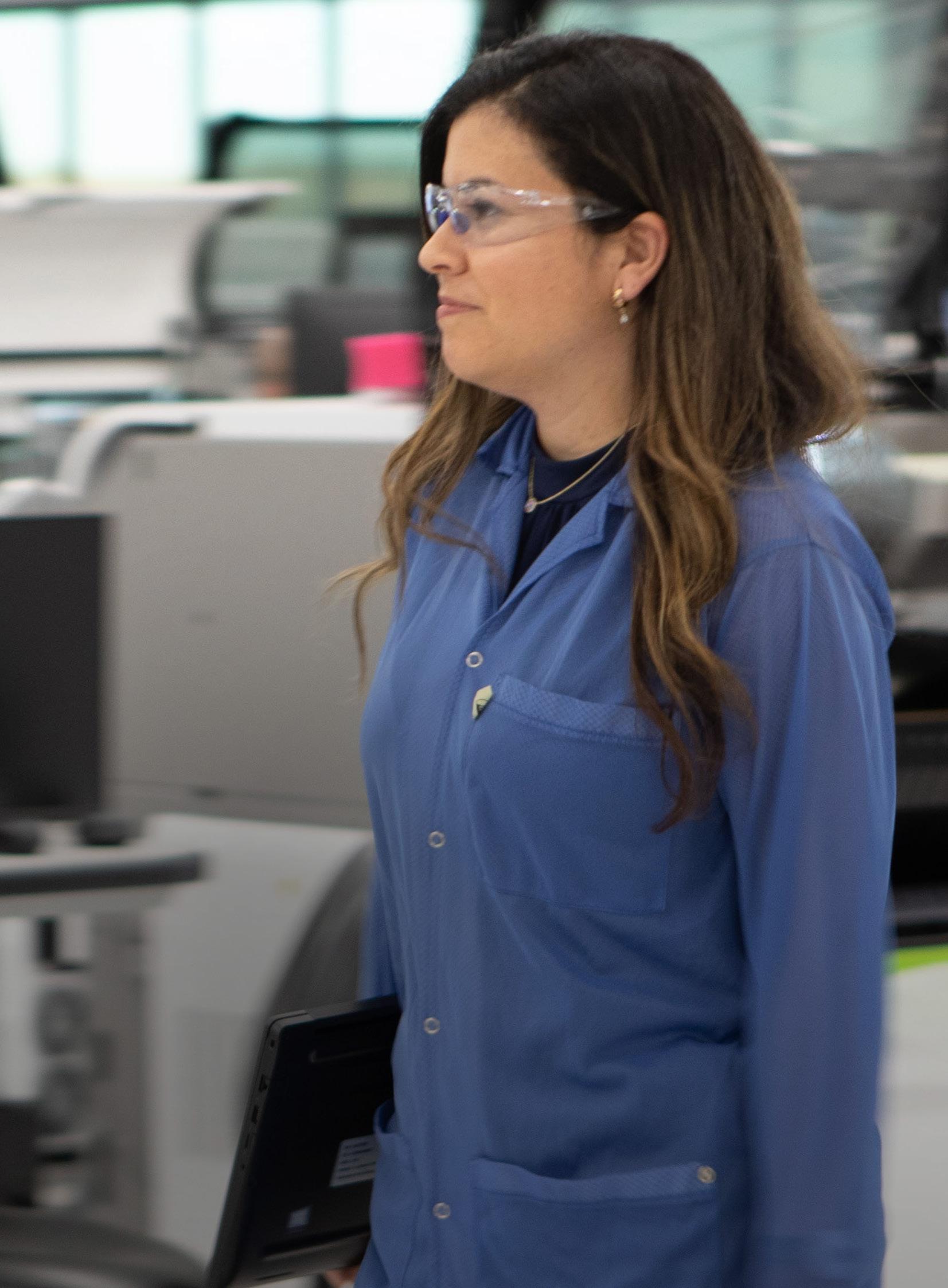
Connect with us:


The Hispanic Association of Colleges and Universities recently collaborated with New Jersey City University to organize a virtual Emerging Leaders' Summit. The summit aimed to prepare students from 51 colleges and universities for internships and career opportunities.
Did you know that community colleges enrolled 8.9 million students in the 2020-21 academic year, representing 41 percent of undergraduates? The Community College Research Center (CCRC) analysis found that about 5.7 million students were enrolled in community colleges in the fall of 2021. University counselors, internships, and college achievement plans play crucial roles in student success.

The National Nuclear Security Administration Minority Serving Institutions Internship Program (NNSA-
MSIIP) offers year-long internships with the NNSA, national laboratories, and site offices. Applications for the upcoming period will open on Aug. 1, 2023. Additionally, the U.S. Department of Energy Clean Cities Coalition offers yearly internships for undergraduate and graduate students to work on projects promoting clean vehicle technologies.
The DOE recently announced the 19 institutions hosting fellows for the new $6 million Clean Energy Innovator Fellowship program. Fellows will work at public utility commissions, municipal and rural cooperative utilities, and grid operators to advance innovative clean energy solutions. The Clean Energy Innovator Fellowship is administered by the Oak Ridge Institute for Science and Education.
The Idaho National Laboratory (INL) offers internships to undergraduate and graduate students. INL hosted 511 interns from 150 colleges and universities in 2022, and hosts over 500 interns each year. For more information, visit INL Internships. The DOE Community College Internships program provides training
at 16 participating laboratories for community college students planning to enter a technical career. Applications for the CCI program are solicited annually, and internships are 10 weeks long for the fall (August through December) and spring (January through May) terms.
If you are interested in studying extreme temperatures, pressures, and environments, consider applying for internships at the Lawrence Livermore National Laboratory. LLNL's Atmospheric, Earth, and Energy Division offers undergraduate and graduate students the opportunity to engage in practical research experience. Applications for summer 2024 will be accepted from Dec. 1, 2023, to Feb. 28, 2024.
Lastly, the Science Undergraduate Laboratory Internships program offers appointments at one of 17 participating DOE laboratories/facilities. Many students use their research experience to generate journal articles for print in national publications. HE
Internships are competitive and allow STEM students to showcase their talent
The Air Force Research Laboratory (AFRL) provides unparalleled research and technology solutions for both the Space Force and Air Force. When others say its impossible, AFRL finds a way. Join our team to lead, discover, develop and deliver tomorrow’s technology.




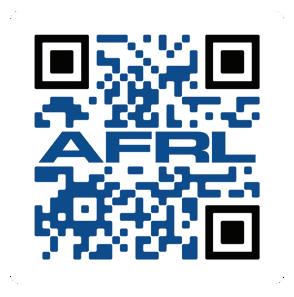



Climate change is one of the most pressing challenges of this generation. Our changing climate threatens the environment, ecosystems, and societies. Tackling this complex issue requires innovative approaches. Artificial intelligence (AI) has emerged as a game-changing tool in this battle, offering vast potential to address climate change.
energy systems by predicting power generation patterns, thus optimizing the integration of solar, wind, and other clean energy sources into the grid.
3. Smart Resource Management
Accurate climate modeling is crucial for understanding the impact of climate change and developing effective mitigation and adaptation strategies. AIpowered algorithms can analyze data, such as temperature, precipitation, and atmospheric conditions. These analyses can generate more accurate long-term climate projections by identifying patterns and trends within these datasets. Furthermore, these projections enable researchers to make informed decisions and plan proactive measures.
Energy usage is a significant contributor to greenhouse gas emissions. AI-driven solutions can adjust energy consumption patterns, manage demandresponse programs, and optimize energy distribution systems. These solutions are effective in reducing energy waste and carbon emissions. AI can also enhance the efficiency of renewable
AI can transform natural resource management. For instance, machine learning algorithms can analyze satellite imagery and sensor data to monitor deforestation, illegal logging, and wildfires in real time. Detecting and reporting these activities enables authorities to take immediate action and prevent further damage. Similarly, AI-powered water management systems can optimize irrigation techniques, reducing water waste and ensuring sustainable water usage.
5. Climate Change Mitigation Strategies
4. Sustainable Agriculture and Food Security
Agriculture is both a victim and a contributor to climate change. AI can help transform farming by promoting sustainable practices and ensuring food security. Machine learning algorithms can analyze soil conditions, weather patterns, and crop data. This data leads to optimized irrigation, fertilizer application, and pest control. AI can also assist in crop disease detection and yield prediction, leading to higher agricultural productivity while reducing resource consumption and minimizing the environmental impact.
AI plays a crucial role in developing effective climate change mitigation strategies. AI can use data to identify emission sources, assess their impact, and recommend targeted interventions. For instance, AI algorithms can optimize traffic flow to reduce congestion and lower vehicle emissions, suggest energy-efficient building designs, or recommend policy interventions to decarbonize industries. Additionally, AI-driven carbon capture and storage technologies can help remove greenhouse gases from the atmosphere.
Artificial intelligence (AI) has emerged as a gamechanging tool in this battle, offering vast potential to address climate change
AI can support climate finance by identifying investment opportunities in renewable energy, sustainable infrastructure, and climate adaptation projects. Machine learning algorithms can analyze financial and climate data to assess risks, model the potential impact of climate change on investments, and guide decisionmaking for investors and financial institutions. This integration of AI and finance ensures that resources are efficiently allocated to projects
with the most significant potential for mitigating and adapting to climate change. The fight against climate change requires a multidimensional and technology-driven approach. AI is poised to play a pivotal role in this battle. By leveraging the power
of AI, we can enhance climate modeling, optimize energy usage, manage resources sustainably, transform agriculture, devise effective mitigation strategies, and assess climate-related risks. HE

Our teams are united in pushing the boundaries of imagination and excellence. Join us.



The Bureau of Land Management, which is a part of the Department of the Interior, oversees more than 20 million acres of public lands in 11 western states that have the potential for wind energy projects.
Wind energy projects have been approved by the BLM since 1982, and currently, there are over 2,900 megawatts of approved capacity for wind energy projects on public lands, which can provide power to 1 million homes.
The Department of Interior, led by Secretary Deb Haaland, is taking action to address the climate crisis. In November 2021, the Department of Interior announced significant progress toward a clean energy future.
families who lack resources to rebuild or relocate after a climate event.
Haaland met with leaders from other federal agencies, state representatives, and labor community members to increase renewable energy development on federal lands and waters. They committed to deploying 30 gigawatts of offshore wind by 2030, generating 80,000 jobs.
The Department of Interior identified Wind Energy Areas in the New York Bight, shallow waters near Long Island and the New Jersey coast, to develop offshore wind projects while considering coexistence with ocean users and removing areas of highest conflict from consideration.
The Department of the Interior approved the South Fork Wind project, a 130-megawatt offshore wind energy project located southeast of Black Island in Rhode Island.
Management is responsible for offshore renewable energy development in federal waters. Offshore wind energy projects create new opportunities, access stronger winds, create domestic jobs, and revitalize ports.
The aim is to deploy 30 gigawatts of offshore wind by 2030, generating power for millions of homes, creating tens of thousands of jobs, and reducing CO2 emissions by millions of metric tons. The first large-scale offshore wind project in the United States has been approved and is expected to create 3,600 jobs and provide enough power for 400,000 homes and businesses.
During a White House forum, Haaland highlighted that the climate crisis has a disproportionate impact on communities of color and low-income
This approval is in line with the administration's plan to generate 30 gigawatts of offshore wind energy by 2030. The South Fork project is expected to produce enough clean energy to power more than 70,000 homes and businesses.
The Bureau of Ocean Energy
On July 5, 2023, the Ocean Wind 1 project, located approximately 13 nautical miles southeast of Atlantic City, was approved by the Department of the Interior's Bureau of Ocean Energy Management. It is estimated that the project will generate 1,100 megawatts of clean energy, which can power over 380,000 homes and is expected to create more than 3,000 good-paying jobs throughout its three-year construction cycle.
This is the third commercial-scale offshore wind energy project approved by the Biden-Harris administration.

The Bureau of Land Management (BLM), a part of the Department of the Interior, manages more than 20 million acres of public lands with the potential for wind energy projects.
The Vineyard Wind project offshore Massachusetts and the South Fork Wind project offshore Rhode Island and New York are currently under construction and being built by
union labor. These projects represent progress towards the administration's goal of developing 30 gigawatts of clean, renewable offshore wind energy by 2030 while protecting biodiversity and ocean uses.

"The approval for the Ocean Wind 1 project is another milestone in our efforts to create good-paying union jobs while combating climate change and powering our nation," said Secretary Deb Haaland.

The project's approval demonstrates the federal government's commitment

to developing clean energy and fighting climate change, and is a testament to the state of New Jersey's leadership in supporting sustainable energy sources and economic development for coastal communities.
The Record of Decision (ROD) documents the decision to approve Ocean Wind LLC's plan to construct up to 98 wind turbines and up to three offshore substations within its lease area. The decision also documents the extensive range of monitoring and mitigation measures that Ocean Wind will undertake to reduce the potential for impacts to protected species, such as marine mammals, sea turtles, and Atlantic sturgeon. HE
There are over 2,900 megawatts of approved capacity for wind energy projects on public lands, which can power 1 million homes.
A COMPANY UNLIKE ANY OTHER.
A FUTURE UNLIKE ANY OTHER.
A COMPANY UNLIKE ANY OTHER. A FUTURE UNLIKE ANY OTHER.
A CAREER UNLIKE ANY OTHER.
A CAREER UNLIKE ANY OTHER.
FM Global is a commercial and industrial property insurer specializing in engineering-driven solutions and research.
FM Global is a commercial and industrial property insurer specializing in engineering-driven solutions and research.

Take a closer look at engineering opportunities at FM Global, and discover just how different a career in insurance can be.
Take a closer look at engineering opportunities at FM Global, and discover just how different a career in insurance can be.


jobs.fmglobalcareers.com
jobs.fmglobalcareers.com

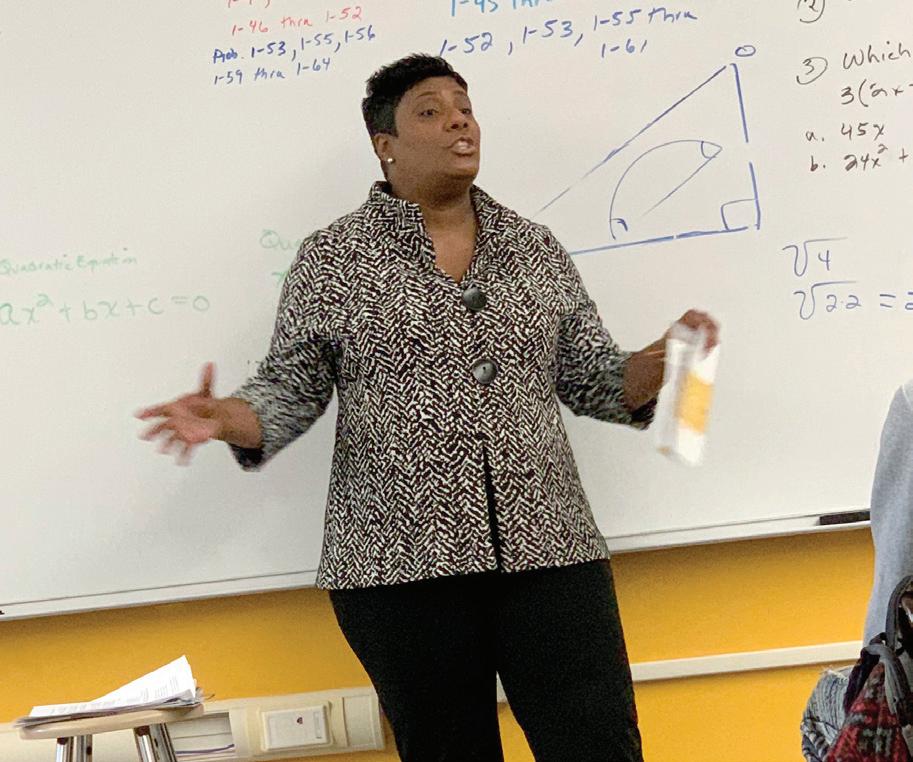
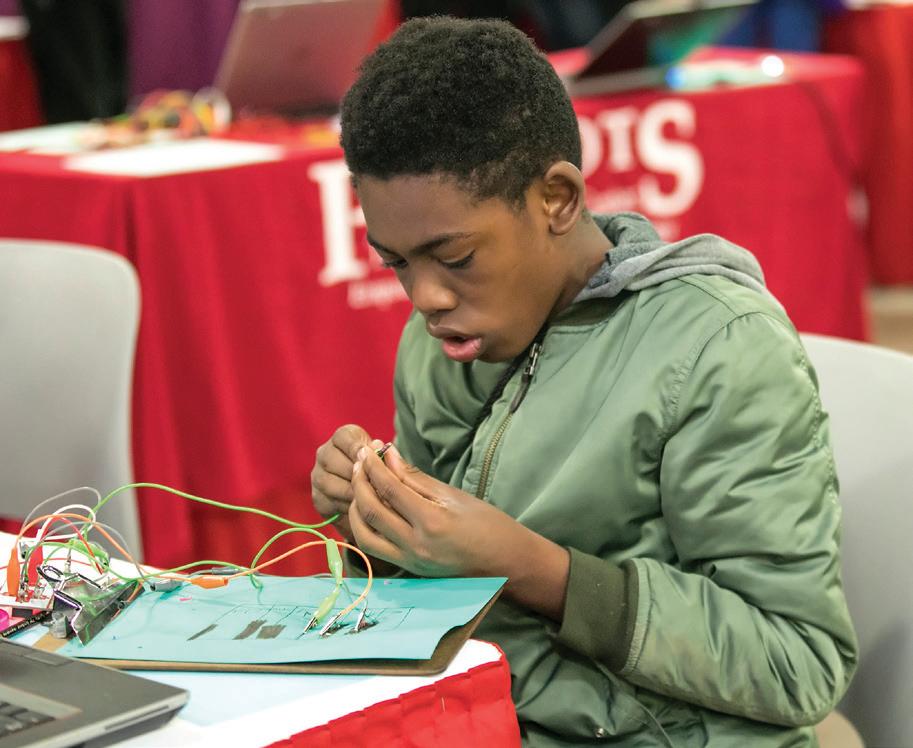

Renowned climate scientist PATRICK TAYLOR, based at NASA Langley Research Center, offers profound insights into the current state of our planet at a recent seminar hosted by Career Communications Group’s US Black Engineer magazine. Taylor’s enlightening insights as a climate scientist at NASA shed light on the interconnectedness of our planet and the urgent need to combat climate change. The evidence presented, from the loss of sea ice and the melting
of land ice to the increasing occurrence of extreme weather events, reinforces the importance of taking proactive measures. By understanding the greenhouse effect and the power of collective action, we can work toward curbing carbon pollution and safeguarding the well-being of our planet and future generations.

THE INTERCONNECTED PLANET, CLIMATE SCIENCE, AND THE POWER OF DATA
Taylor began his talk by emphasizing how
choices made in one part of the world can have global repercussions. Using NASA’s Group on Earth Observations (GEO) modeling system, Taylor provides compelling visuals of atmospheric interactions, such as the dispersion of Sahara dust particles over the Atlantic Ocean and the exchange of air masses between different regions. These examples illustrate Earth’s interconnected systems and underscore the importance of collective action.
Peering into the thousands of frozen layers inside Greenland’s ice sheet is like looking back in time. Each layer provides a record of what Earth’s climate was like at the dawn of civilization, or during the last ice age, or during an ancient period of warmth similar to the one we experience today. Scientists using ice-penetrating radar data collected by NASA’s Operation IceBridge and earlier airborne campaigns have built the first-ever comprehensive map of layers deep inside the Greenland Ice Sheet. Credit: NASA’s Goddard Space Flight Center
View the full video:
Taylor reflects on his personal journey as a climate scientist, tracing his childhood fascination with clouds. He shares how this fascination grew into a deeper understanding of clouds’ crucial role in the climate system. As he delved further into scientific research, Taylor realized that climate change was not an abstract concept but a reality with significant implications for our lives. He highlights the vulnerability of critical systems, like food, water, energy,
The mass of the Greenland ice sheet has rapidly declined in the last several years due to surface melting and iceberg calving. Research based on observations from the Gravity Recovery and Climate Experiment (GRACE) satellites (2002–2017) and GRACE Follow-On (since 2018) indicates that between 2002 and 2020, Greenland shed approximately 280 gigatons of ice per year, causing global sea level to rise by 0.03 inches (0.8 millimeters) per year.

and health, emphasizing the need to comprehend and predict climate change for societal resilience.
These satellites offer a comprehensive perspective on Earth’s climate, enabling scientists to track long-term changes. Taylor cites compelling evidence, such as the global surface temperature record and the alarming decline in Arctic Sea ice, underscoring the urgency for action.
Taylor stresses the importance of climate literacy across all sectors of society. As climate change increasingly pervades our lives, its impacts touch every aspect, including agriculture, water management, energy consumption, and public health. Taylor urges individuals to grasp the implications of climate change within their professional domains, as this knowledge forms the foundation for resilient decision-making and adaptation strategies.
Although climate change presents formidable challenges, Taylor injects hope into the discussion. He highlights the transformative power of knowledge

NASA’s role in climate research hinges on its ability to collect and analyze vast amounts of data.
Taylor emphasizes the significance of NASA’s Earth-observing fleet, consisting of over 20 satellites that monitor key climate indicators, such as temperature, clouds, sea level, and ice.
and collective action, emphasizing that even small steps can yield significant outcomes. Skillful predictions based on robust climate research facilitate better planning, cost savings, and improved safety measures. Taylor encourages individuals to embrace optimism and recognize their agency in shaping a sustainable future.
NASA’S ROLE IN CLIMATE RESEARCH HINGES ON ITS ABILITY TO COLLECT AND ANALYZE VAST AMOUNTS OF DATA.
On June 15, 2016, the Advanced Land Imager (ALI) on NASA’s Earth Observing-1 satellite acquired a natural-color image of an area just inland from the coast of southwestern Greenland (120 kilometers southeast of Ilulisat and 500 kilometers north-northeast of Nuuk). According to Marco Tedesco, a professor at Columbia University’s Lamont Doherty Earth Observatory, melting in this area began relatively early in April but was not sustained. It started up again in May and grew into the watery June scene pictured above.

Taylor highlights the staggering extent of change occurring in our planet’s polar regions. He reveals that in the past four decades, we have lost over four times the land area of Texas in sea ice alone. Furthermore, Taylor draws attention to the melting of land ice, particularly the Greenland ice sheet. NASA’s GRACE data shows that since May 2002, Greenland has lost an average of approximately 279 gigatons of ice per year. This loss accounts for about 25 percent of global sea-level rise, with recent years witnessing even more significant changes.
It is essential to distinguish between two important terms: climate change and climate warming. While they are related, they refer to different aspects of the Earth’s climate system.
Climate change encompasses a broader understanding of long-term shifts in various aspects of Earth’s climate, including temperature, precipitation patterns, wind patterns, and more. It recognizes that our planet’s climate is not static and undergoes natural variations over extended periods. However, climate change also refers to the significant alterations occurring in recent decades, primarily attributed to human activities.
Climate change encompasses both natural and human-induced factors.
Natural causes include volcanic eruptions, variations in solar radiation, and Earth’s orbital changes. Human activities, such as the burning of fossil fuels and deforestation, contribute to climate change by increasing greenhouse gas emissions. These gases trap heat in the atmosphere, leading to a warming effect known as the greenhouse effect.
Climate warming specifically refers to the rise in average global temperatures over a prolonged period. It is a consequence of climate change, resulting from the increased concentration of greenhouse gases in the atmosphere. As these gases accumulate, they trap more heat, leading to a gradual rise in temperatures worldwide.
Climate warming manifests in various ways, including the melting of glaciers and ice caps, rising sea levels, and shifts in precipitation patterns. It affects ecosystems, weather patterns, and the distribution of plant and animal species. While climate warming is a prominent
aspect of climate change, it is crucial to recognize that climate change encompasses broader changes in Earth’s climate system beyond just temperature. Climate change includes alterations in precipitation, wind patterns, ocean currents, and other factors that influence the overall climate.
Understanding the difference between climate change and climate warming helps us grasp the multifaceted nature of the challenges we face. By comprehending these terms, we can engage in informed discussions and actions to address the complex issues related to our changing climate.
In the face of these pressing challenges, it’s crucial to question what we are doing to our planet and how we can make a positive impact. Taylor instills hope by emphasizing that we have the power to change the course of climate change. By ceasing the pollution of carbon dioxide, we can prevent further accumulation of energy and mitigate the adverse effects of climate change. The decisions we make as individuals, communities, and nations matter. The need for collective action is more urgent than ever. We must hold ourselves accountable and demand responsible environmental policies and practices from governments and corporations. By adopting sustainable practices, embracing renewable energy sources, and supporting initiatives aimed at reducing greenhouse gas emissions, we can contribute to a cleaner and healthier future.
It is imperative that we question our actions and take responsibility for the impact we have on the Earth’s climate system. Together, we can create a sustainable and resilient future for all. Let us actively engage in discussions, educate ourselves and others, and demand action from those in power. Our choices today will shape the world we inherit tomorrow. The time to act is now, as every ton of carbon pollution contributes to further climate change and its wide-ranging impacts. Let us be the generation that makes a difference.
OUR CHOICES TODAY WILL SHAPE THE WORLD WE INHERIT TOMORROW.


When we think of NASA, images of space exploration and lunar missions come to mind. However, NASA's contributions extend beyond the realm of space. The agency's aeronautics division plays a vital role in revolutionizing aviation, addressing climate change, and creating a sustainable future. Through its research and its partnerships with industry, NASA is striving to develop innovative technologies that will transform aircraft propulsion, reduce emissions, and make air travel more environmentally friendly.
While NASA is widely known for its space endeavors, its aeronautics division has been instrumental in advancing aviation technologies for over 60 years.
The National Aeronautics and Space Administration, as the name suggests, encompasses both space exploration and aeronautics.

The Aeronautics Division focuses on transforming aviation, promoting sustainability, enhancing mobility, and fostering economic growth. NASA's collaborations with
industry, government agencies, and academia aim to turn technological advancements into practical solutions for a greener aviation industry. Climate change poses significant challenges to our planet, and aviation is not exempt from its impact. While aviation accounts for about 2 percent of the world's carbon footprint, the sheer volume of air travel necessitates urgent action. NASA recognizes the need to address these emissions and works closely with organizations like the International Civil Aviation Organization (ICAO) to reduce the carbon footprint of aviation. The goal is to achieve carbon neutrality by 2050, requiring transformative technologies and a paradigm shift in aircraft propulsion.

Within NASA's aeronautics division, the Integrated Aviation Systems Program is at the forefront of developing game-changing technologies. One such technology is electric aircraft propulsion, which involves the integration of electric power systems into aircraft. By leveraging hybrid electric systems, NASA aims to reduce fuel consumption, decrease emissions,
and enhance overall efficiency. Through partnerships with industry leaders, NASA is driving the development of megawatt-class electric propulsion systems for aircraft, starting with regional planes.
NASA's Electrified Powertrain Flight Demonstrations (EPFD) project focuses on advancing hybrid electric aircraft propulsion systems. These flight demonstrations involve integrating powertrain systems into regional aircraft and testing their performance and feasibility. By partnering with industry, NASA accelerates the maturation of electric power systems and identifies gaps in regulations and standards. This collaborative effort lays the foundation for certifying hybrid electric aircraft, leading to increased efficiency, reduced emissions, and operational cost savings.
The benefits of NASA's endeavors in electrified aircraft propulsion are multifaceted. By working closely with industry partners, NASA accelerates the transition of electric power systems into commercial transport. This collaboration helps advance technology readiness, ensures safety, and drives the development of regulations and standards for hybrid electric aircraft certification. Additionally, the advancements made in electrified aircraft propulsion have broader implications for transportation systems beyond aviation, potentially benefiting electric vehicles and other sectors.
NASA's aeronautics division is leading the charge in transforming aviation and mitigating the environmental impact of air travel. By focusing on electric aircraft propulsion systems, NASA aims to revolutionize the industry, reduce emissions, and create a sustainable future. Through partnerships with industry, academia, and government agencies, NASA is driving innovation and paving the way for a greener aviation sector. With ongoing research, flight demonstrations, and regulatory advancements, NASA is committed to making air travel more environmentally friendly, ultimately contributing to global efforts to combat climate change.

NASA's commitment to tackling climate change and creating a sustainable future extends beyond space exploration. The agency's aeronautics division offers exciting opportunities for individuals passionate about making a positive impact on the environment. By joining the NASA team, aspiring scientists, engineers, and researchers can contribute to the development of innovative technologies that revolutionize aviation, reduce emissions, and address the challenges of climate change.
The agency encourages hands-on experience, participation in teams, and real-world applications of knowledge. Embracing a problem-solving mindset,




learning from failures, and iterating designs are key components of the work at NASA. It is through this interdisciplinary approach and practical experience that new ideas can be brought to life and sustainable aviation systems can be developed.
Just a decade ago, electric flight was a distant dream, but today it is a reality with unmanned aerial vehicles (UAVs) and certified two-person small planes taking flight. This is an exciting time to be part of NASA's aeronautics division and contribute to the advancements driving the electric aviation revolution. While engineering plays a crucial role in developing technologies, the contributions of scientists cannot be overstated. Fields like materials science and chemistry provide the foundation for innovation. Scientists are essential in understanding and optimizing battery technologies, creating sustainable materials, and driving advancements that enable a greener aviation industry. Their expertise and collaboration with engineers are instrumental in bringing ideas from the theoretical realm into practical implementation.
Joining NASA's aeronautics division offers unparalleled opportunities to be at the forefront of saving the planet through aviation innovation. Whether as an engineer, scientist, or researcher, individuals can contribute to the development of transformative technologies, such as electric aircraft propulsion systems. The interdisciplinary nature of the work fosters collaboration and requires a
diverse range of skills and expertise. By becoming part of NASA's mission to combat climate change, young professionals can play a vital role in shaping the future of aviation and creating a more sustainable world. With NASA's commitment to engaging youth and fostering innovation, the journey to save the planet becomes a collective endeavor.
NASA offers various avenues for involvement, including internships, employment opportunities, local events, and collaborations with universities and small businesses. By reaching out to diverse backgrounds and disciplines, NASA aims to cultivate a broader community that will shape the future of the agency and contribute to its mission of saving the planet. Whether one's passion lies in electrical engineering, aeronautics, materials science, or any related field, there is a place at NASA. HE
While NASA is widely known for its space endeavors, its aeronautics division has been instrumental in advancing aviation technologies for over 60 years.


to reduce carbon emissions.
goal of reducing the impact of climate change from many standpoints.
INJune 2023, as more than 450 wildfires burned in Canada, code red air quality alerts were issued in several states across the United States. People with asthma and emphysema were advised not to go outside. Joggers were also warned that smoke could affect the heart and circulatory system. The more humankind understands the relation between climate changes and their impact upon the ecosystem, the more efficient management decisions will be in accomplishing a common goal
The United States Forest Service, which is an agency of the U.S. Department of Agriculture (USDA), manages more than 150 national forests across the United States, including 20 national grasslands and 193 million acres of land. The USDA Forest Service also shares the results of its research and information with the public. Additionally, with support of the federal government, the USDA Forest Service places itself—and its scientists— at the vanguard of the fight against the negative impacts of climate change.
The USDA Forest Service also presents an open path for STEM professionals in multiple fields of research with a clear
Some of these views include concepts like contextual vulnerability, which studies social factors like race and gender (among others) and their impact on communities depending on their economic level. By the same token, the STEM professionals of the USDA Forest Service address issues like property vulnerability as a disadvantage faced by low-income communities and their inability to access resources for facing climate events.
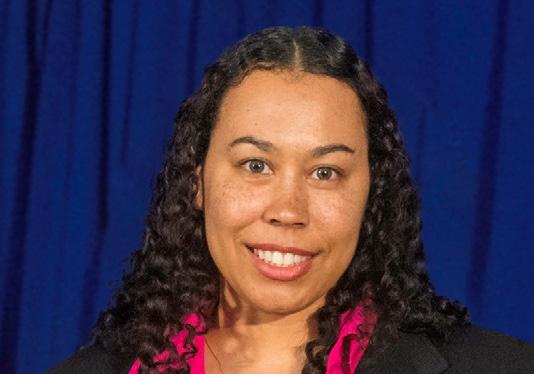
The impact of climate change can also be studied to determine national fire crisis strategies, extreme events

and disturbances, chronic stretches to watersheds and related ecosystems, the destruction of the delivery of ecosystem products and services, and the disproportionate impacts on disadvantaged communities.
A deep social approach has led the USDA Forest Service to develop studies to determine the best practices for working with Indigenous communities. The result is the adaptation of traditional ecological knowledge to the preservation of natural resources and the reduction of carbon emissions. Meanwhile, the use of machine learning software by the Forest Service helps propel initiatives like predicting the
gender of trees, which provides an advantage in planning for planting and cuts costs and time.

The Forest Service also studies timber as an alternative for traditional building materials with the goal of reducing carbon emissions and climate change. Modeling exercises for global predictions and the formulation of scenarios for future weather events are included in the scope of research conducted by the Forest Service.
Forest Service professionals provide scientific knowledge that can be applied to make climate-smart decisions. As climate change becomes a more present factor for the planet, an even greater number of ecosystems are threatened by events such as “out of control” wildfires across 10 million acres. The international effort to reduce the impact presents opportunities and challenges for aspiring STEM professionals.

More than ever, diverse voices are needed in the advancement of environmental justice and the production of science for the better management of climate-smart environments. HE


Prairie View A&M University (PVAMU) announced that the National Science Foundation (NSF) had awarded its Phase II funding of $5 million to the Center for Energy and Environmental Sustainability (CEES). The total funding for both phases of the center stands at $10 million.

Additionally, the center received $3.7 million in funding from competitive grants from the NSF, U.S. Department of Agriculture (USDA), U.S. Department of Transportation (DOT), and Shell, a global oil and gas company. The goals of the center funding include:
• Addressing global energy issues.
• Improving PVAMU’s infrastructure.
• Promoting sustainability.
• Encouraging underrepresented science, technology, engineering, and math (STEM) students to enter engineering.
Raghava R. Kommalapati, a Honeywell Endowed Professor in the Department of Civil and Environmental Engineering, principal investigator, and director of the center, assembled a team at PVAMU to achieve these goals. The CEES team includes faculty from the Roy G. Perry College of Engineering, the College of Arts and Sciences, and the College of
“We are creating a culture of belonging and learning from each other to understand and appreciate the broad scope of what we are doing. That has been the most satisfying thing .”
by Lango Deen
The CEES’ main goal is to conduct research programs in renewable energy and environmental sustainability. Phase I researchers divided their research programs into biofuels, wind energy, and energy and environmental sustainability.
In Phase II, Kommalapati leads an interdisciplinary team that aims to achieve scientific and technological breakthroughs in energy engineering. The team comprises several co-principal investigators from various departments, a technical coordinator, and an education and outreach coordinator. The research was built on Phase I results and expanded the research scope.
“Our Phase II officially started in 2019, but we still had some leftover funds from Phase I, so we filed an extension,” Kommalapati told US Black Engineer magazine in a Zoom interview.
“In Phase I, we had three focus areas: onshore wind energy, biofuels that are added to gasoline, and the third focus area is environmental sustainability, where we looked at different scenarios for an energy portfolio and their ecological impacts. For example, what would happen to the Metro Houston, TX, air quality if we shut down one of the major power plants and generated equivalent wind power elsewhere in South Texas?
“Another focus was creating an energy minor at the undergraduate level and an energy concentration in the Master of Science in Engineering program. Those were the targets, and we met all of them successfully.”
• 9 post-doctoral graduate students work through the CEES.
• 350 graduate students started 23 graduate-level energy-related courses.
• 36 energy-related courses offered, 19 new, were taken up by 700 undergraduate students.
• 176 students who were employed or received scholarships worked on the CEES research program as students or graduate assistants.
• 1,000+ PVAMU students were exposed to the new energy engineering area in the Roy G. Perry College of Engineering.
The new courses included Energy Sustainability, Global Warming and Climate Change, Nuclear Energy, and various courses related to bio energy and wind energy.
“To receive the Phase II award, the PVAMU team has to compete like anybody else in the NSF CREST program,” Kommalapati said. “We chose areas with similar broader themes as Phase I. We got into bioenergy, where we grow our energy crops using water that we treat as part of our third focus area, where we use water from fracking operations. We treat that water and then use it to grow energy crops. Biomass from those energy crops produces hydrocarbon fuels directly, meaning they can go directly into a gas tank.”
Agriculture and Human Sciences.
The grant allows the team to broaden the research scope of PVAMU’s Centers of Research Excellence in Science and Technology (CREST) program, which supports enhancing the research capabilities of minority-serving institutions.
After the initial NSF funding, there were more grants from the USDA, the Department of Energy, and the DOT’s University Transportation Centers program, which advances transportation research and technology and develops next-generation transportation professionals.
During USBE’s conversation with Kommalapati in 2021, he mentioned that the center is focused on increasing the sustainability of energy generation and wastewater treatment processes. A major issue with hydraulic fracking
Honeywell Endowed Professor Director, NSF CREST Center for Energy & Environmental Sustainability Professor, Department of Civil and Environmental Engineering
Roy G. Perry College of Engineering, Prairie View A&M University

operations, a significant source of oil and gas in Texas, is the massive amounts of water used daily to pump oil and gas. This results in contaminated water that cannot be reused, leading to deep well injection, which causes increased seismic activity in Texas and Oklahoma.
CEES researchers are cleaning this water through membrane processes to make it usable for agriculture or other water applications, including fracking water. Another project involves treating wastewater used in poultry meat processing to reuse. They use about 1 million gallons of water at these plants, and if they can treat this water, then they do not need fresh water each time. These sustainability research aspects
reflect the center’s ongoing efforts.
In addition, researchers are examining the structural safety and reliability of offshore wind turbines. Sensors are used on these platforms, and the data collected is analyzed using data science and machine learning techniques to enhance their reliability.

The professor also aims to establish a new Master of Science with Energy Concentration in Phase II and expand research opportunities for undergraduate and graduate students. The center also aims to enhance its partnerships with different industries to become a national resource. Over the past few years, it has collaborated with oil and gas companies on carbon capture and sequestration. It has a major project with another company and is currently negotiating with one to do some research work.
“These are all direct results of our Phases I and II work,” Kommalapati said. “We are excited because our external advisory board wanted us to develop the expertise and then go out to get industry collaborators to come in and work with. We are very happy that we have been able to do that.”
PVAMU is a part of the Texas A&M University Engineering Experiment Station (TEES) initiative funded by the nation’s energy and interior departments, a $40 million consortium started about a year and a half ago called the Ocean Energy Safety Institute. As part of this body, the historically Black college and university can compete on a level playing field for research funding.
Reflecting on the high points of Phase I and II, Kommalapati said faculty and students had learned so much about themselves over the last seven years. For his part, there has been added value in getting center grants as opposed to various faculty applying for separate departmental grants.
“The difference is we create a dedicated research culture within our center because of the umbrella type of organization that we were able to create with the funds from NSF,” he explained. “That gives us the added benefit of having a bunch of students working in the labs, sitting next to each other. They may be working on different problems, but we created a culture that only exists in major universities, which have several labs with students learning from each other,” the Honeywell Endowed Professor said.
“That doesn’t happen in small colleges like ours. But CEES provided that opportunity, where we are creating that culture of belonging and learning from each other—understanding and appreciating the broad scope of what we are doing. That has been the most satisfying thing for me.
“Because when I was a grad student,
Engineering courses must have strong prerequisites, but since 2010, the center has worked with various departments to offer comprehensive energy courses useful for engineering students and those in the College of Agriculture and Human Sciences and the College of Arts and Sciences. To encourage more students, PVAMU has scholarships for pursuing these courses, which might lead to an energy engineering minor.
The center visits nearby high schools and participates in Houston's Energy Day event annually. Energy Day is a free festival with 70 demos and exhibits. It educates families on energy, STEM, and careers in those fields. Students can meet experts and explore their interests. Officially, the cutoff date for Phase II is 2024. Still, since the Phase II funding was received during the pandemic, which rolled back most things on university campuses, the end date may be extended with no cost with review and approval by the NSF. Before Phase II cuts off, the CEES will go back seven years and collect data on where their students are now, at least tracking those that received financial support from the center.


I was surrounded by a bunch of grad students, and I was learning mostly from them and everybody else working around me in the labs. It’s a beautiful thing to see.”

“When I was a graduate student, I was surrounded by a bunch of graduate students, and I was learning mostly from them and everybody else working around me in the labs. It is a beautiful thing to see.”PVAMU students at Houston Energy Day event PVAMU student, Gladstone Ukioma, poster winner
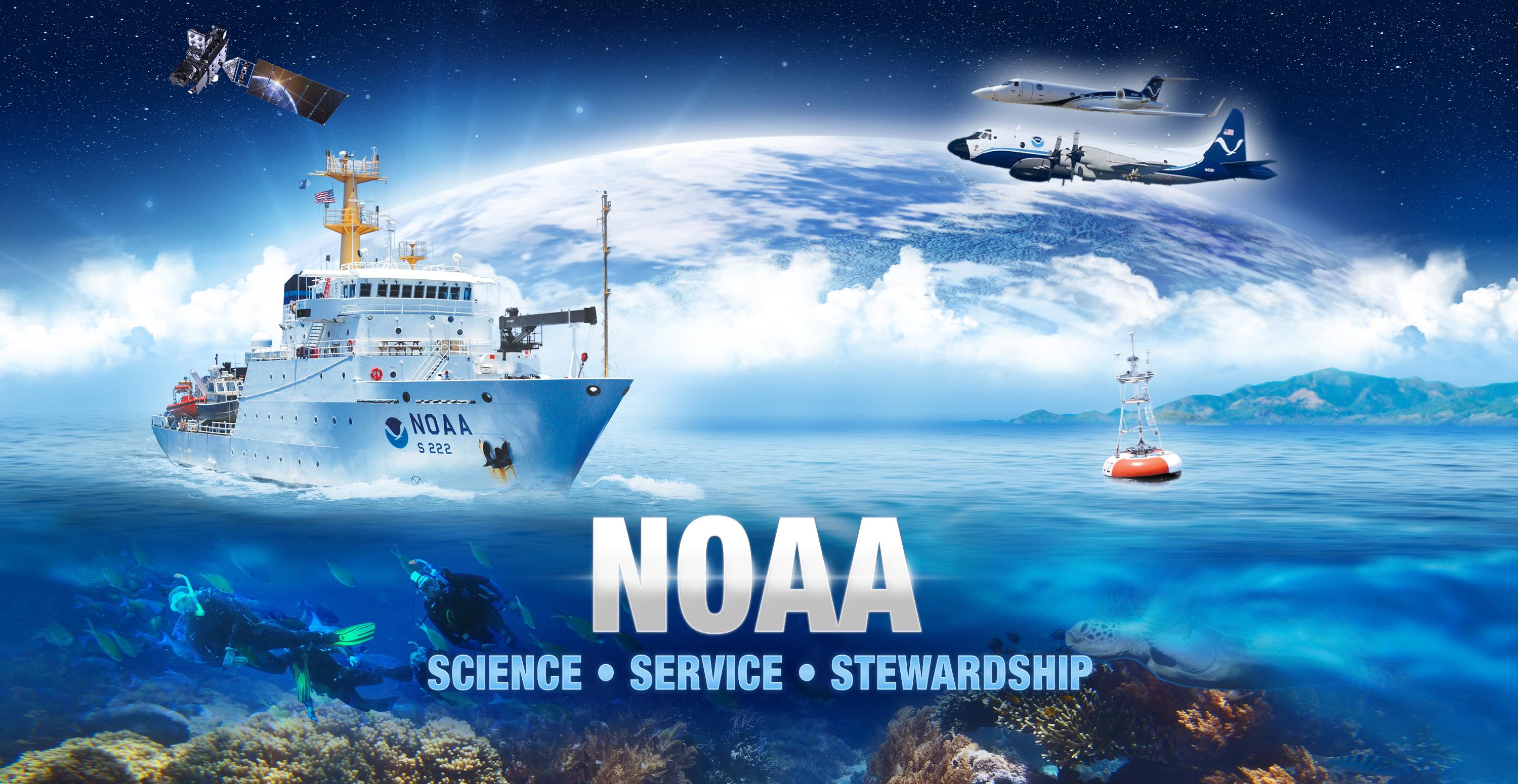
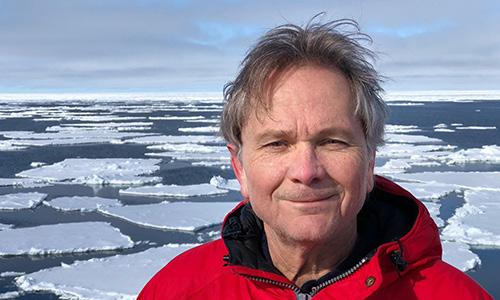





The shift toward sustainable and clean power sources is creating a surge in job opportunities in the energy sector, particularly in renewable energy. The companies listed in this section are organizations that prioritize diversity and work with HBCUs. However, Black and Latino workers are still underrepresented in the energy industry.

> Industry Overview Energy Infrastructure Sector
> Job Horizon Where the Jobs Are
> Top Supporters of Engineering Schools
Energy and Energy-related employers
The energy infrastructure sector is experiencing a monumental shift as the world transitions toward sustainable and clean sources of power. As a result, numerous career opportunities have emerged for individuals passionate about making a difference in this crucial field.

ASrenewable energy and energy efficiency technologies become more integrated into the U.S. power system, the creation and growth of clean energy jobs are on the upswing. This development bodes well for the nation’s economy, as investments in clean energy infrastructure and projects necessitate a larger American workforce. Currently, there are nearly 8 million jobs in the renewable energy sector. In 2021, employment in the energy industry grew at a faster pace than the overall U.S. employment rate.
The energy sector offers a wide range of career paths catering to various skill sets and interests. Future and current job seekers might consider any one of the following careers:
• Energy Analyst: Conducting research and analysis to optimize energy efficiency, identify costsaving measures, and assess the environmental impact of energy consumption.
• Sustainability Manager: Overseeing strategies to reduce environmental impact and ensure
compliance with sustainability goals.
• Energy Consultant: Advising clients on energy management, conservation, and the adoption of clean energy solutions.
• Grid Operations Specialist: Monitoring and managing the distribution and transmission of electricity across the power grid.
The current career opportunities in the energy sector have a profound impact on our daily lives, and future
careers will undoubtedly innovate our society. By transitioning to sustainable energy sources, these jobs help mitigate climate change, reduce our reliance on fossil fuels, and enhance our overall environmental well-being. Energy professionals are driving the development and deployment of innovative technologies, leading to cleaner air, healthier ecosystems, and a more sustainable future for generations to come. Additionally, these careers create economic growth, foster innovation, and promote energy independence, contributing to the overall well-being of our global society. The energy sector offers competitive salaries, with the potential for significant growth. Starting salaries for entry-level positions typically range from $50,000 to $70,000 per year, depending on the specific role and location. As professionals gain experience and expertise, average salaries can reach well into the six-figure range. The industry’s salary potential is bolstered by a rising demand for clean energy, evolving technologies, and increased
• Energy Storage Revolution: Advancements in energy storage technologies, such as hightech batteries, will facilitate the integration of intermittent renewable energy sources into the power grid. This will enable a more reliable and flexible energy system, reducing dependence on traditional power plants.
• Electrification of Transportation: The electrification of vehicles is gaining momentum, leading to a surge in demand for charging infrastructure and renewable energy generation. This trend will create new opportunities in clean transportation and smart grid integration.

Several companies are driving the energy sector forward and providing exciting career opportunities. Some of the prominent players in the energy and energy infrastructure sector include:
investments in renewable projects worldwide. Moreover, the transition to green energy sources has spurred a surge in job creation, with the energy sector projected to outpace many other industries in terms of employment growth.
Looking ahead, the energy industry is poised for remarkable transformation in the next 5–10 years. Key trends that will shape the industry include:
• Renewable Energy Dominance: The world is rapidly adopting renewable energy sources, such as solar and wind, which will continue to displace fossil fuels. This transition will drive job creation, innovation, and investment in sustainable technologies.
• Decentralized Energy Systems: Distributed energy resources, including rooftop solar panels and microgrids, will continue to gain popularity. This decentralized approach will enhance energy resilience, provide greater control over energy consumption, and enable communities to become self-sufficient in energy production. The energy sector is a hotbed of opportunity for individuals seeking rewarding careers that contribute to a sustainable future. As the world transitions toward cleaner energy sources, the demand for skilled professionals in renewable energy, energy efficiency, and sustainable practices will soar. By joining leading companies in the energy sector, job seekers and college students can make a tangible impact on the world while enjoying competitive salaries and significant opportunities for growth.
HE• TESLA: Renowned for its electric vehicles and innovative energy storage solutions.
• NEXTERA ENERGY: The largest renewable energy generator in North America, with a focus on wind and solar power.
• ORSTED: A global leader in offshore wind energy, driving the transition to a renewable future.
• BP: Embracing a diversified energy portfolio, including renewables, biofuels, and low-carbon technologies.
• GENERAL ELECTRIC: Offering a range of energy solutions, from gas and wind turbines to grid optimization and electrification technologies.
LOOKING AHEAD, THE ENERGY INDUSTRY IS POISED FOR REMARKABLE TRANSFORMATION IN THE NEXT 5–10 YEARS.
The energy industry offers a wide array of job opportunities across various sectors, making it an attractive field for individuals interested in science, technology, engineering, and mathematics (STEM). Where are these jobs located worldwide? According to the International Energy Agency, “The regional distribution of energy jobs depends on multiple factors. First, jobs are concentrated where energy facilities are being built more than where they currently exist. Given the labour
intensity of building new facilities, fast-growing markets tend to dominate the workforce.” The energy industry presents diverse employment options in both traditional and renewable sectors. Here are some prominent areas of the industry where job opportunities exist:
• Renewable Energy: Solar, wind, hydroelectric, and geothermal power offer roles in design, installation, maintenance, and project management.
• Energy Efficiency: Energy auditors, analysts, and consultants are sought after to optimize
energy consumption and reduce environmental impact.
• Oil and Gas: Exploration, drilling, refining, and distribution provide employment in traditional energy sectors.
• Grid Management: Specialists in grid operations, smart grids, and energy storage are in high demand for efficient power distribution.
• Energy Consulting: Experts who offer strategic guidance on sustainability, policy, and market analysis.

• Energy Policy and Regulation: Professionals who shape energy policies and ensure compliance with environmental standards.
As the energy industry continues to evolve, recruiters will seek talent in a wide variety of areas, which benefits job seekers from a variety of backgrounds:
• Renewable Energy Project Development: Focusing on the planning, financing, and execution of renewable energy projects.
• Energy Storage and Battery Technology: Experts in battery
technologies, energy storage systems, and grid integration.
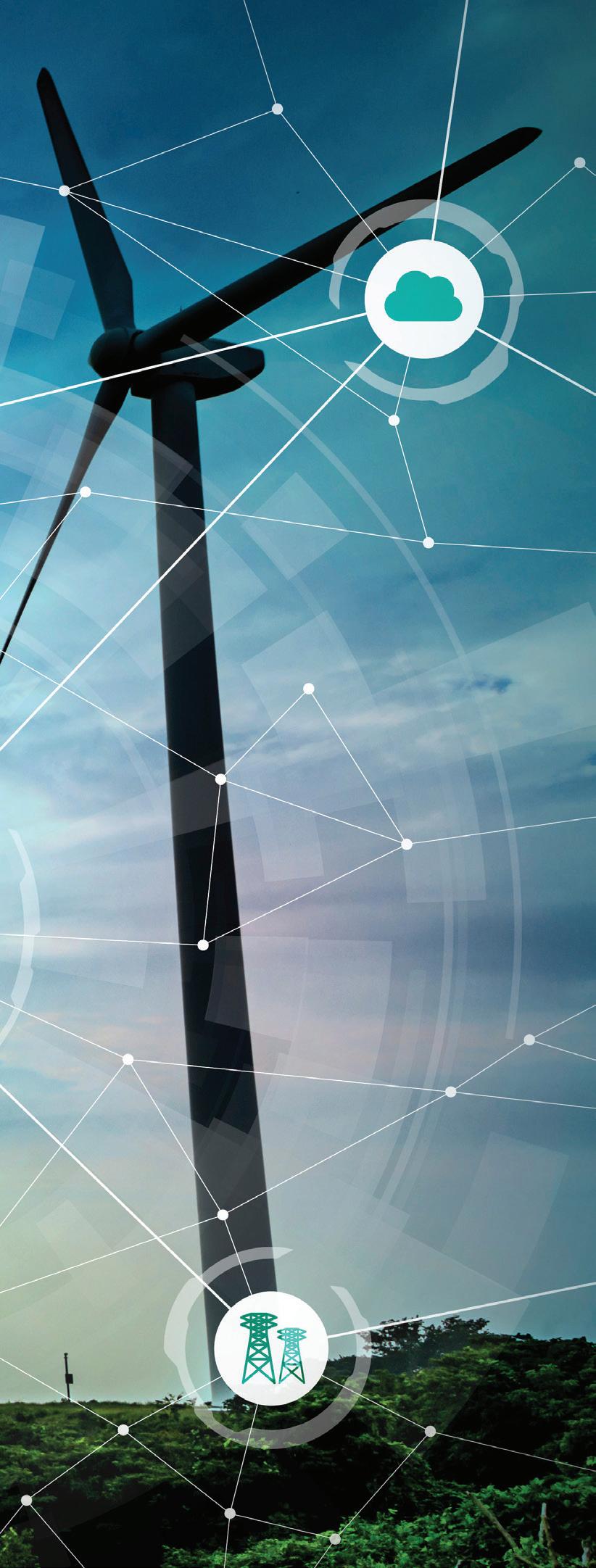
• Electric Vehicle (EV) Infrastructure: Professionals skilled in developing EV charging infrastructure and managing EV fleets.
• Cyber Security in Energy: Specialists adept at safeguarding critical energy infrastructure from cyber threats.
• Data Analytics and Artificial Intelligence: Professionals capable of harnessing big data and AI to optimize energy systems and predict demand.
To excel in the energy industry, you should develop your skills, focus on areas of interest, select college majors, or pursue trades. Depending on your aptitude and interests, consider developing a strong STEM background, specifically foundations in science, technology, engineering, and mathematics, which are crucial for most energy industry roles. Another skillset of interest is renewable energy expertise. Specialize in renewable energy technologies—such as solar, wind, or hydroelectric power—to gain access to broad career paths in renewable energy, such as solar energy panel technician.
Understanding energy-efficient technologies, energy auditing, and sustainability practices is a valuable set of knowledge for roles like an energy auditor. Likewise, proficiency in data analytics, modeling, and visualization tools for optimizing energy systems is a desirable area of expertise for employers. For those seeking nontechnical careers in the energy infrastructure industry, environmental and policy awareness could be a key skill to develop. Stay informed about energy policies, regulations, and environmental considerations if a career in environmental or energy advocacy sounds interesting. As with other STEM industries, job seekers will need to develop strong organizational, communication, and leadership skills for successful project execution. A blend of technical skills and soft skills will help prepare you for potential employment. How can job seekers prepare for
a career in the energy and energy infrastructure industry? Building your background of experiences, skills, and ultimately your resume can be achieved through a few tried-andtrue endeavors. Seek opportunities to gain practical experience and industry exposure through internships or apprenticeships with energy companies or research institutions. Obtain relevant certifications in energy efficiency, renewable energy technologies, or project management to enhance employability. Stay updated on industry trends, attend conferences, and network with professionals to gain insights and establish valuable connections. Pursue undergraduate or graduate degrees in fields such as engineering, environmental science, renewable energy, or energy management to gain in-depth knowledge and expertise. Join industry-related professional associations to access resources, networking opportunities, and career support.
As you begin your career, continuously update your knowledge about emerging technologies, policy changes, and industry trends. Pursue professional development opportunities to stay ahead of evolving demands. Acquire and maintain a broad range of skills and interdisciplinary knowledge to adapt to the dynamic energy landscape. Connect with experienced professionals who can provide guidance and support throughout your career journey. Show enthusiasm for sustainable energy solutions and be open to new challenges and innovations.
The energy industry offers abundant job opportunities across diverse sectors, providing a promising career path for STEM professionals. By focusing on the areas in high demand, developing the necessary skills, and gaining practical experience, individuals can position themselves for a successful and rewarding future in this ever-evolving industry. HE
By focusing on the areas in high demand, developing the necessary skills, and gaining practical experience, individuals can position themselves for a successful and rewarding future in this ever-evolving industry.

THEU.S. Department of Energy’s Office of Energy Efficiency and Renewable Energy (EERE) recognized the racial disparities in the country’s energy systems and research during Black History Month in February 2023. In response, the DOE pledged to increase engagement and collaboration with historically Black colleges and universities (HBCUs) and other minority-serving institutions (MSIs) to promote greater equity in the energy sector.
According to an energy department report, energy sector jobs include all the professional, construction, utility, operations, and production occupations associated with energy infrastructure, production, and use, including the manufacturing of motor vehicles.
As per the report, in 2021, motor vehicles and component parts companies employed about 2.6 million workers. The energy efficiency technology group, one of the largest groups, had over 2.1
by ccgeditors@ccgmag.commillion workers in 2021, while the United States had an estimated 857,579 electric power generation jobs in the same year. The nuclear sector employed 64,743 workers across all technologies.
The petroleum sector employed 669,042 workers across all technologies. Petroleum employment is concentrated in fuels, which accounts for 69 percent of jobs within that technology area. The coal sector employed 155,884 workers across all technologies, with the largest concentration—70,831—in electricity.
Coal fuels totaled 53,312 jobs with another 31,741 in fuel transmission and distribution. The natural gas sector employed 535,284 workers across all technologies, with the largest concentration (211,773) in fuels, although this was closely followed by fuel transmission and distribution. Together, these two technologies make up 79 percent of all natural gas jobs.
The latest demographics report on the U.S. energy workforce states that 5.6
million workers identified as white, while only 608,443 workers identified as Black or African American in 2021. The report also shows that there were 125,591 American Indian or Alaska Native workers, 503,710 Asian
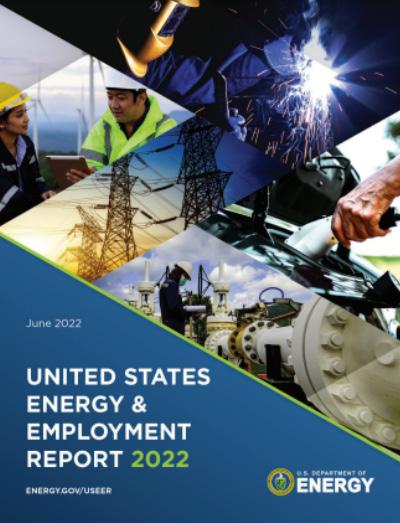 United States Energy & Employment Jobs Report, June 2022
United States Energy & Employment Jobs Report, June 2022
2023 marked the 20th anniversary of the Top Supporters List. In the spring edition of US Black Engineer magazine, we celebrated the anniversary of the survey that is completed each year by engineering deans at Historically Black Colleges and Universities (HBCUs) and AMIE, a corporateacademic alliance.
We did a review of all the energy and energyrelated companies and organizations that appeared on the list within the last decade. These organizations contribute to these schools’ institutional missions and go beyond traditional industry-university relationships. They are committed to diversity and have a deep investment in working with HBCUs. Here they are from A to Z.
• Air Force Office of Scientific Research
• Air Force Research Laboratory
• Applied Research Lab at Penn State
• Baker Hughes
• Battelle Corporation
• Brasfield and Gorrie
• CenterPoint Energy
• Chevron
• Con Edison
• ConocoPhillips
• Cummins
• Denso Corporation
• Dominion Energy
• Duke Energy
workers, and 72,736 Native Hawaiian or other Pacific Islander workers.
The energy industry has a higher percentage of non-white workers, accounting for 26 percent of the workforce, which is greater than the 22 percent average for the entire U.S. workforce. However, the industry has a lower percentage of Black and Latino workers than other industries. Unfortunately, there are no technology industries that have proportional representation of Black workers to their overall representation in the U.S. workforce. HE
• Edison International
• Entergy
• Exelon
• ExxonMobil
• Ford Motor Company
• General Electric (GE)
• General Motors (GM)
• The Goodyear Tire & Rubber Company
• Idaho National Laboratory
• Johns Hopkins University Applied Physics Laboratory
• KBR
• Kinder Morgan
• Lawrence Livermore National Laboratory
• National Oceanic and Atmospheric Administration
• NextEra Energy
• Nissan North America
• Oak Ridge National Laboratory
• Office of Naval Research
• Rolls-Royce
• Sandia National Laboratories
• Shell plc
• Siemens Global
• Southern Company
• Toyota
• U.S. Department of Agriculture
• U.S. Department of Defense
• U.S. Department of Energy
• U.S. Department of Transportation
• Volkswagen of America
• Whiting Turner
These organizations go beyond traditional industry-university relationships. They are committed to diversity and have a deep investment in working with HBCUs.

The Department of Energy emphasizes the importance of responsibly developing America's diverse energy resources, such as solar, wind, water, geothermal, bioenergy, and nuclear, to maintain leadership in clean energy. Five visionaries, ranging from a geologist with a background in oceanography to the mastermind behind Tesla's stationary energy storage program, are dedicated to environmentalism. They strive to address current challenges and bring underrepresented individuals into the cleantech industry, all while working toward a common goal of protecting our planet and inspiring a brighter and cleaner future. These energy leaders are leading the way for greater access to energy jobs.
is devoted to investing in companies committed to innovation, equity, and sustainability. In fact, she’s invested in 75 of them since 2015. After over a decade leading teams developing aviation/aerospace programs at Boeing, she’s applying her leadership and vision as managing partner at Supply Change Capital, an early-stage venture firm investing in food sustainability, with an emphasis on climate and culture.
In just three years, Supply Change Capital has invested in 15 companies, of which 80 percent are led by underrepresented founders, and 70 percent are committed to creating healthier communities and minimizing the food system's impact on the environment.
Recognized as one of the top 100 influential Latinas in the United States by Latino Leaders magazine three years in a row (among many other leadership accolades), Cadena’s community impact zeroes in on diversifying funders and founders in the venture capital landscape. She influences future Latinx leaders as a founding board member of LatinxVC, a lead investor in Portfolia's Rising America fund, and a board member for Acumen America, the Latino Community Foundation, and CARE Enterprises.

An engineer, venture capitalist, and community builder, Noramay Cadena
A Kauffman fellow, Cadena earned an M.B.A., a master’s in engineering systems, and a bachelor’s in mechanical engineering from the Massachusetts Institute of Technology (MIT).
Renewable energy professional Mateo Jaramillo grew up watching his parents work in the farming community of Salinas, CA. His personal experience with the benefits and challenges of traditional energy inspired him to effect change in innovation. He began his journey by earning his A.B. in economics from Harvard and a master’s in theology from Yale Divinity School. Jaramillo has made an indelible mark in the energy space as an executive at several major global companies. Among these, he served as chief operating officer and part of the founding team at Gaia Power Technologies before joining Tesla in 2009 as director of powertrain business development. He then became vice president of products and programs for Tesla’s stationary energy storage program, an initiative he conceived of during his time at the

company. In that role, he shaped Tesla Energy’s product line and business model definition, as well as global policy and business development.
For the last six years, Jaramillo has been co-founder and CEO of Form Energy. The company is dedicated to “reshaping the global electric system by creating a new class of low-cost, multi-day energy storage systems” and is working on developing a 100-hour, iron-air battery system to make powering the electric grid solely on 100 percent low-cost renewable energy a reality.
As a community leader, Jaramillo serves on the board of directors for the American Clean Power Association.
(JFF), a nonprofit at the intersection of climate and workforce.
Named one of the “53 Investors to Watch in 2021” by Pitchbook and “101 Black Titans in Tech,” Eldridge’s expertise extends to fintech, media, energy, transportation, and the circular economy. As a co-founder of Include Venture Partners, Eldridge focused on investing in diverse founders and fund managers dedicated to creating innovative ecosystems in their areas. Previously, Eldridge was senior director of investments at the Los Angeles Cleantech Incubator (LACI), where he helped establish both the LACI Impact Fund I (LIF I) and the LACI Debt Fund to allow cleantech companies to grow with diverse capital.
Prior to LACI, Eldridge was director of the incubator at the University of California in Riverside, CA. Under his leadership, Eldridge’s team brought the first $10 million venture fund to the Inland Empire region of Southern California. Because of his vision to meld entertainment, policy, and entrepreneurship, the region was ranked number four in the United States for minority entrepreneurs by Entrepreneur magazine.
With undergraduate degrees in poetry and literature and a graduate degree in geopolitical economics from Texas A&M University-Commerce, Pepperdine University, and Claremont Graduate University, Eldridge began his career as a banker and economist with Wells Fargo Bank, UBS Investment Bank, and TRW Investments. Eldridge has also been a founder, board member, and/or investor in companies such as NCX, Bevy, BlocPower, ILTG Media, Boswell Official Apparel, Voter, Xtopoly, Rookielook, iListen, KYC Hospitality, KIGT, Majira Project, CleanTek Capital, and ConCreates.
Jennifer Bauer Morton is San Diegobased geologist and executive in the environmental space. As project manager at SCS Engineers, she utilizes her 18 years of experience to conduct site assessments of agricultural properties, commercial and residential developments, former military sites, and city projects throughout California. In her work, she assesses the environmental integrity of the land and interfaces with regulatory agencies and corporations to determine an appropriate course of action to prevent environmental damage.
Prior to joining SCS Engineers, Morton ran her own consulting company, Terramar Environmental Consulting, founded in 2011 and was recognized as a 2022 Woman of Influence by the San Diego Business Journal. She holds a bachelor’s degree in earth sciences from UC San Diego and is currently completing her master’s at San Diego State University. Morton has been an adjunct professor of oceanography and geology at Palomar College and a board member of the Jonathan Tarr Foundation.

Taj Ahmad Eldridge is a multihyphenate C-suite executive and cleantech industry leader. He currently serves as managing director of climate innovations at Jobs For The Futures
Eldridge is deeply involved in giving back to his community as a member of the Climate Finance Advisory Team of the Community Investment Guarantee Pool (CIGP), the executive board of the Homeboy Ventures Fund, The Majira Project, and the advisory board of VC Include.

The Hispanic community is significantly underrepresented in the energy sector, making up only 16 percent of the workforce , but Latino and Latinx workers are making waves in clean energy.JOSÉ L. PÉREZ President & CEO
Hispanics In Energy

José L. Pérez is a renowned entrepreneur and leader in the energy industry. In 2012, he cofounded Hispanics In Energy (HIE), whose mission is to advance Hispanic inclusion in the space. Under his leadership, HIE has organized successful energy policy forums in various states, including Washington, D.C.; Illinois; Colorado; Texas; New Mexico; Michigan; Pennsylvania; North Carolina; Minnesota; Ohio; Arizona; and California.
Pérez has been influential in national energy policies. In 2022, Pérez was appointed as a National Petroleum
Council (NPC) member by Energy Secretary Jennifer Granholm. He is also a member of the Justice40 review Hydrogen Energy study team. Pérez was named energy ambassador by the U.S. Department of Energy in 2020. In that role, he assisted underserved communities in accessing energy offices and consulted on highlighting diversity, equity, inclusion, and belonging (DEIB) in energy.
Pérez has held several leadership positions in the energy industry, including chair of the Energy Utilities Diversity Group in Minnesota in 2019, where he worked with policymakers, regulators, labor, business, and industry leaders to launch policies to encourage greater participation by diverse communities. His past experience includes executive positions with the California Department of Transportation and the California State Personnel Board.
As a community leader, Pérez owns and is the publisher of the Latino Journal. He has also created and led several nonprofits, such as the National Utilities Diversity Council (NUDC), the California Utilities Diversity Council (CUDC), and the Energy Utilities Diversity Group (EUDG) in Minnesota. HE

We
At

We’re pushing the limits of what’s possible.
make the world smarter, more connected and more sustainable.

I worked in the private sector for eight years on smallscale projects that were primarily a benefit to the clients. In the Corps of Engineers, I get to work on massive projects that benefit the entire nation for national defense, shipping, flood control and environmental resilience.
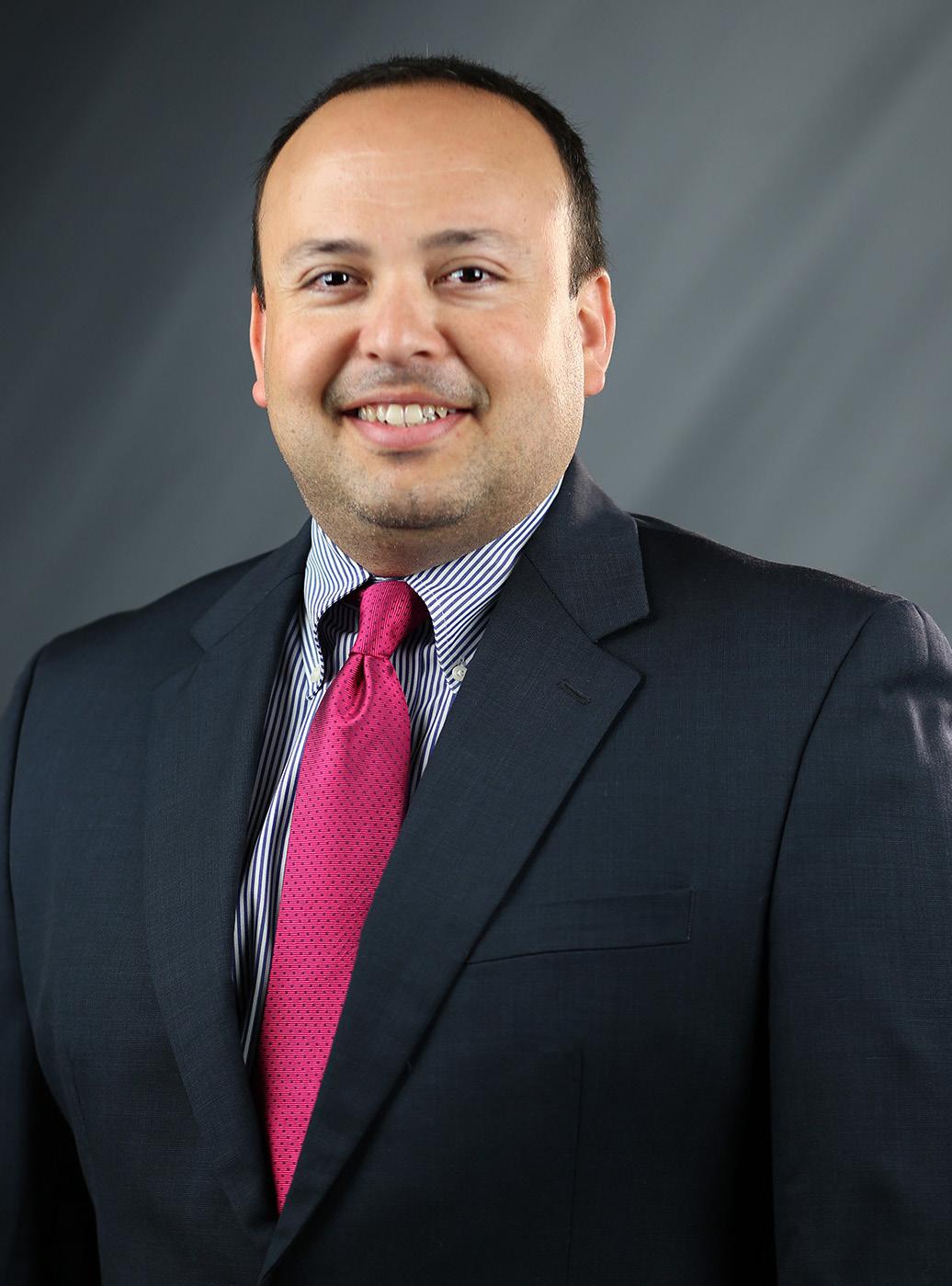 - Milan Mora, Program Manager
- Milan Mora, Program Manager

The U.S. Army Corps of Engineers has approximately 37,000 dedicated Civilians and Soldiers delivering engineering services to customers in more than 130 countries worldwide.

Globally - 37 Countries to include: Germany, Italy, Japan, Korea
In the U.S. - 39 Geographic districts across the U.S.
9 laboratories and centers

Learn more:
https://www.usace.army.mil/careers/


Mission Critical Occupations:
• General Natural Resources Management and Biological Sciences series (0401)
• Engineering Technical series (0802)
• Construction Control Technical series (0809)
• Civil Engineering series (0810)
• Mechanical Engineering series (0830)
• Electrical Engineering series (0850)
• Contract Specialist series (1102)
• Realty series (1170)
• Lock and Dam Operating series (5426)
• IT Specialist (2210)












At AAM, we believe an equitable and inclusive culture encourages, supports, and celebrates the unique voices of our global workforce. We are proud to sponsor the 28th Women of Color STEM conference— honoring the significant contributions of women in science, technology, engineering and math fields.

Congratulations to all of the honorees. We celebrate and shine a spotlight on three members of #TeamAAM:


From diversity, strength. The more diverse we are as a company, the stronger, smarter and more innovative we become. That’s why we’re proud to support the advancement of our Hispanic employees.
Learn more at rtx.com/careers

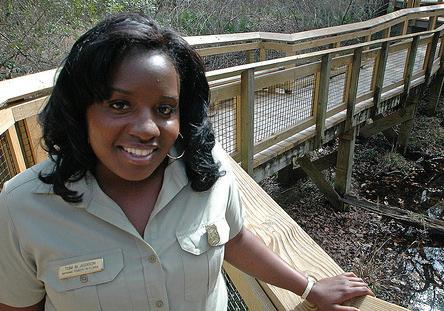



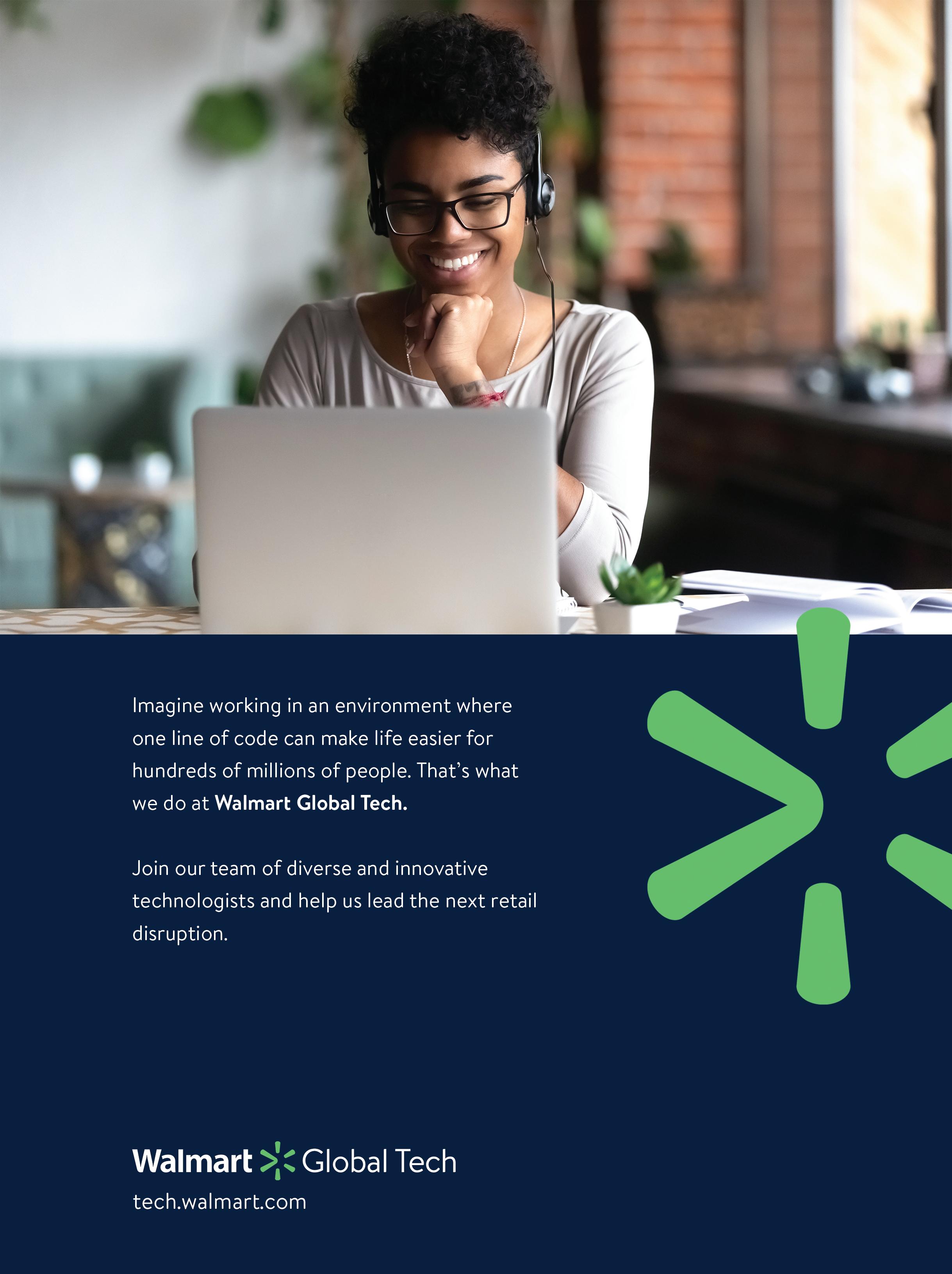
We are building the most diverse, equitable and inclusive workforce for all to come, stay, and thrive.
We are building the most diverse, equitable and inclusive workforce for all to come, stay, and thrive.
We are building the most diverse, equitable and inclusive workforce for all to come, stay, and thrive.


Everybody In at HP. To learn more, visit HP.com/diversity
Everybody In HP. learn more, visit HP.com/diversity

Everybody In at HP. To learn more, visit HP.com/diversity
